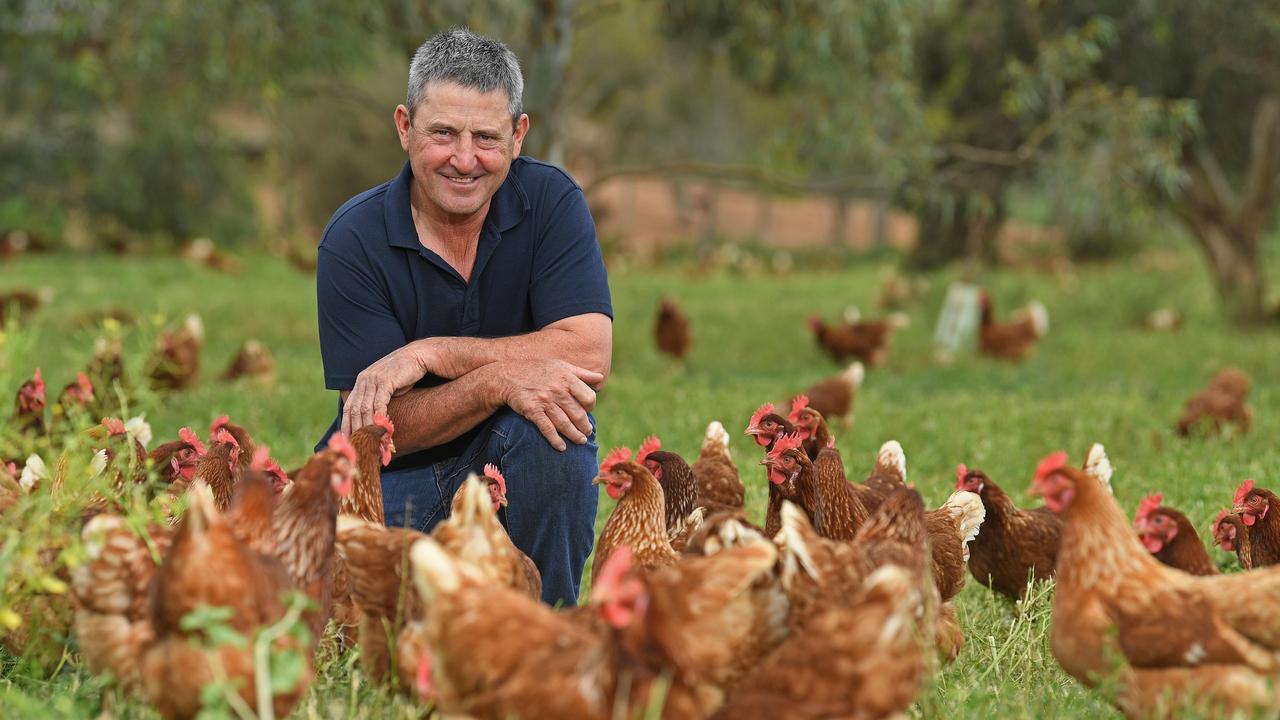Suncorp’s summer washout points to a bigger storm front
Suncorp boss Steve Johnston was caught off-guard by all signs pointing to this year being hotter and dryer under an El Nino event.

Business
Don't miss out on the headlines from Business. Followed categories will be added to My News.
Insurers are getting pretty used to spending the summer months underwater. Flooding, cyclones and heavy storms have been a regular feature across eastern Australia in recent years.
But what caught Suncorp’s Steve Johnston off-guard were all the signs were pointing to this year being hotter and dryer as an El Nino weather pattern started taking hold of Australia’s east coast.
Johnston was speaking to The Australian as he returned to Brisbane after attending an insurance roundtable in Cairns this week. The event was hosted by assistant treasurer Stephen Jones and included locals and emergency services to help co-ordinate the response to recent cyclones and flooding which hit the region and beyond over Christmas.
Chief executive of Insurance Australia Group Nick Hawkins attended and so to did executives from QBE and Allianz.

The Suncorp boss says both official forecasts and the insurers own numbers had expected the El Nino conditions to deliver a materially drier start to the summer season. This hasn’t been the case, with flooding and storm events right up and down the east coast over the past six weeks.
“It’s unusual to have a cyclone so early in the season. It’s not unprecedented — but this is an El Nino system that is behaving like a (wetter) La Nina in the past two months,” he says.
While damages are likely to run into the tens of millions of dollars, with more than 40,000 claims lodged across the industry from three states since Christmas, the most recent storm events are classified as mid-sized events in insurance measurements.
So this means they are unlikely to impact important reinsurance pricing alone. But they will certainly add to the compounding risks over the longer term, given the higher frequency of severe weather events.
“It’s becoming more complex and more challenging,” he says. “To the extent that you do or don’t believe in climate change, the reality of it is that events are becoming more frequent. And when they do happen, they seem to be becoming more severe”.

Aside from cleaning up after floods, there’s a lot going on with insurers. The Federal Government is driving a parliamentary inquiry into the industry, looking at tackling the vexed issue of insurance affordability — particularly for the tropic north —, delays in claims management and reconstruction.
The inquiry will also look how the Federal government-backed cyclone reinsurance pool is working, which is designed to get big insurers writing more business in the tropical north.
One point of contention the industry has raised with the $10bn reinsurance pool is the 48-hour cut off for claims. In the most recent floods across northern Queensland the bulk of damage was done 48 hours after cyclone Jasper was downgraded to a tropical low, making it a flood event.
Elsewhere, the industry is grappling with efforts to clamp down on payment of commissions and there’s a separate review of the industry code of conduct.
Global market
Stephen Jones too is trying to understand the industry from the ground up, last year he joined several insurers on a global roadshow to meet with big global reinsurers which have a massive influence around how premiums are priced in Australia.
Suncorp’s Johnston says this week’s roundtable showed a willingness for the assistant regulator to “listen and learn” about what is taking place in the industry.
Insurers face their own pressures following a natural disaster, including getting access to builders and tradies, particularly in remote areas, while also facing surging construction material costs.
“I found him (Jones) to be very constructive and very willing to get behind the core issues,” Johnston says.

Australia and New Zealand have long been attractive to reinsurers for offering diversification away from Europe and North America, but Johnston says reinsurers have done more modelling in the last three years around the rising risk of flooding, hail and cyclones and this has been underpinning a pricing reset. Suncorp’s reinsurance renewals are on June 30.
IAG, which operates on calendar year, this month locked in its new catastrophe renewals, settling on mid-to-high single digit price increases.
Johnston says it’s now crunch time for Australia around planning and flood protections.
“We are staring at a period of time where we do have to make some very material investments in mitigation and resilience to reduce the risks, make insurance more affordable, more viable, and make the country more resilient over the longer term.”
Meanwhile, Johnston declined to be drawn on the looming Australian Competition Tribunal ruling over whether Suncorp can push ahead with the $4.9bn sale of its regional bank to Melbourne’s ANZ. This will be a key moment for Suncorp.
However, Johnston says the ever-increasing demands on Suncorp’s insurance business over the summer months reinforced the strategic rationale of the sale of the smaller banking unit in the first place.
ANZ appealed the competition regulator’s decision last year to block the deal, with the regulator expressing concerns around further consolidation in the banking market. The competition tribunal’s decision is scheduled to be handed down on February 20.
johnstone@theaustralian.com.au
Originally published as Suncorp’s summer washout points to a bigger storm front




